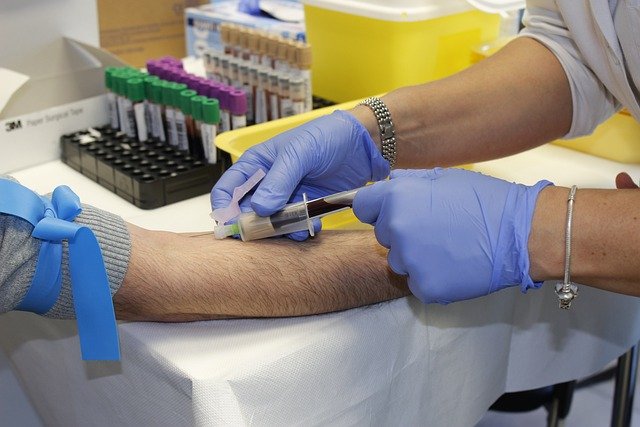Early Indicators and Detection of HIV Infection in the United States 2025: Essential Information
Early HIV symptoms often resemble common illnesses, making detection difficult. Understanding initial signs and U.S. testing options is essential for timely diagnosis and treatment. This article explains early warning signs, testing methods, and how to access testing and care nationwide.

Understanding HIV and Its Initial Symptoms
Human Immunodeficiency Virus (HIV) targets the immune system, diminishing the body’s capacity to defend against infections. In the United States, most people infected with HIV show flu-like symptoms within two to four weeks post-exposure. This timeframe is referred to as the acute HIV infection stage.
Typical Early Symptoms
Symptoms during acute infection can last from a few days up to several weeks and may include:
- Fever
- Headache
- Rash
- Sore throat
- Swollen lymph nodes
- Fatigue
- Muscle and joint pain
Nonetheless, these symptoms are not specific to HIV and can imitate other viral illnesses such as the flu or mononucleosis. Some individuals with HIV might not display any symptoms during this phase, which can delay diagnosis.
The Stages of HIV Infection Progression
HIV infection advances through three primary stages:
-
Acute HIV Infection (Early Stage): Happens within weeks after exposure, characterized by flu-like symptoms and a high viral load in the blood, increasing transmission risk.
-
Chronic HIV Infection (Clinical Latency): Can persist for years with minimal or no symptoms. The virus continues replicating at low levels, but antiretroviral therapy (ART) can effectively manage its progression.
-
AIDS (Advanced Stage): Indicates extensive immune system damage if untreated, leading to opportunistic infections and potentially life-threatening complications.
Detecting and treating HIV during the acute or chronic stages greatly enhances health outcomes and helps prevent progression to AIDS.
Who Should Get Tested and When?
The Centers for Disease Control and Prevention (CDC) recommends that everyone aged 13 to 64 in the United States gets tested for HIV at least once. More frequent testing every 3 to 6 months is suggested for people at higher risk, including:
- Those with multiple sexual partners
- Men who have sex with men
- Individuals sharing injection drug equipment
- Pregnant people during every pregnancy
Moreover, if you experience flu-like symptoms within weeks after possible exposure, getting tested promptly is crucial.
Types of HIV Tests Available for Early Diagnosis
HIV testing methods in the United States have advanced, with several dependable options:
-
Antibody Tests: Identify antibodies the body produces in response to HIV. Offered as rapid self-tests or laboratory tests, though may take longer to detect early HIV infections.
-
Antigen/Antibody Tests: Detect both HIV antibodies and the p24 antigen, which appears shortly after infection—allowing earlier HIV detection compared to antibody-only tests. Typically performed using blood samples.
-
Nucleic Acid Tests (NAT): Detect the virus’s genetic material in the blood and can identify infection earlier than other tests. Recommended when early symptoms appear but prior tests are negative.
Because of the “window period”—the interval between infection and detectability—no test can confirm HIV immediately after exposure. It is important to repeat testing as appropriate after potential exposure.
Where and How to Access HIV Testing in the U.S.
Testing for HIV is widely available through various facilities:
- Hospitals and medical clinics
- Community health centers
- Substance abuse treatment programs
- Pharmacies selling FDA-approved self-test kits (with results in about 20 minutes)
Many testing sites offer free or low-cost services, and insurance generally covers HIV testing without copayments. Self-testing provides privacy and ease but requires careful adherence to instructions for accurate results. Additionally, counseling and referrals for follow-up care are often offered at testing locations.
The Significance of Early Treatment and Managing Viral Load
Initiating antiretroviral therapy (ART) soon after diagnosis is critical. ART lowers the viral load—the amount of HIV present in the blood—to undetectable levels, which:
- Supports maintaining a robust immune system
- Prevents progression to AIDS
- Eliminates sexual transmission risk of HIV
- Reduces transmission through needle sharing and mother-to-child transmission during pregnancy
Consistent adherence to prescribed ART is necessary for effective viral suppression. Missing doses or poor adherence can cause drug resistance and treatment failure.
Communication and Prevention Approaches
Disclosing HIV status to sexual and needle-sharing partners fosters mutual testing and prevention measures. For those without HIV but at risk, pre-exposure prophylaxis (PrEP) is advised as an effective preventive strategy, including after potential exposure.
Pregnant people should undergo testing at every pregnancy to avert mother-to-child transmission, which is highly preventable with early detection and treatment.
Acknowledging Symptom Limitations and Confirming Diagnosis
Because early HIV symptoms may be subtle or completely absent, testing remains the only definitive method for confirming infection. Seeking timely medical advice when symptoms arise or after potential exposure encourages early diagnosis and prompt treatment initiation.
Conclusion
Being aware of early HIV infection signs and testing choices is essential for managing health and reducing transmission in the United States in 2025. Though flu-like symptoms commonly occur early on, they are not unique to HIV, emphasizing the importance of timely testing. Advances in diagnostic technology and broad testing availability help individuals discover their HIV status and access life-saving care early.
Sources
- Centers for Disease Control and Prevention (CDC): About HIV https://www.cdc.gov/hiv/about/index.html
- Centers for Disease Control and Prevention (CDC): Getting Tested for HIV https://www.cdc.gov/hiv/testing/index.html
- National Institute of Allergy and Infectious Diseases: Stages of HIV Infection https://hivinfo.nih.gov/understanding-hiv/fact-sheets/stages-hiv-infection
Disclaimer: This article provides educational content based on data available as of 2025. HIV testing services and treatment availability may vary by location and healthcare provider. For personalized guidance, individuals should consult healthcare professionals and verify details locally.




